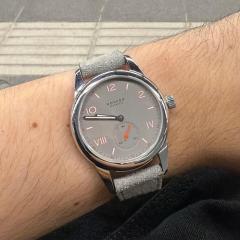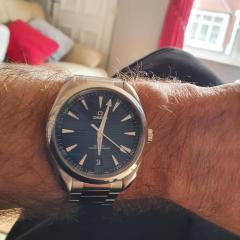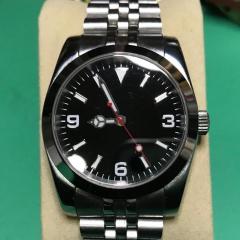-
Recently Browsing
- No registered users viewing this page.
-
Topics
-
Posts
-
By RichardHarris123 · Posted
Tool collection, yes, hording no, I have an aversion to anything not being used. In future, reassemble the movement as far as possible, bag and label what it is and what's missing. -
Welcome to the forum. You don't need the crown to remove the stem as you can just pull it to the 2nd position to access the dimple. Just grip the tube with a pair of pliers and pull it out. Measuring for a replacement could be a little more difficult for a beginner so maybe best just getting an assortment. For the crown you'll need to measure the diameter of the recess where it sits, the outside diameter of the tube along with the thread size of the stem (think it's 0.9mm) Need a closer look at where the crystal meets the case, it looks like what's called an I-Ring and should just push out from the back, preferable with a press. You can then measure the diameter and thickness of the crystal to get a replacement. Not sure what you mean about cleaning and oil solution? Edit Should have asked if you've checked the movement still works?
-
This would mean that if the reaction doubles then I guess we reduce the time by the opposite? Or simplistically in the case of watch cleaning fluids nothing it is really achieved by elevating the temperature other then bad things happening. The only place I know of and watch cleaning were elevated temperatures works is cleaning the band and/or bracelet. It's amazing how much biological material gets caked on the bands and elevating temperature with ultrasonic works well of course you using a proper cleaning product which is different than what you're using the clean your watch movement.
-
Never ask anyone into watchmaking what to keep! As Andy points out we probably all have an aversion to getting rid of potentially “useful “ things 😂 natural born hoarders and tool collectors, every single one of us 🤪🤣 Tom
-
I'd say just keep everything but I'm probably classed as a hoarder. If you come to work on either of these movements again the parts could come in handy.
-





Recommended Posts
Join the conversation
You can post now and register later. If you have an account, sign in now to post with your account.
Note: Your post will require moderator approval before it will be visible.